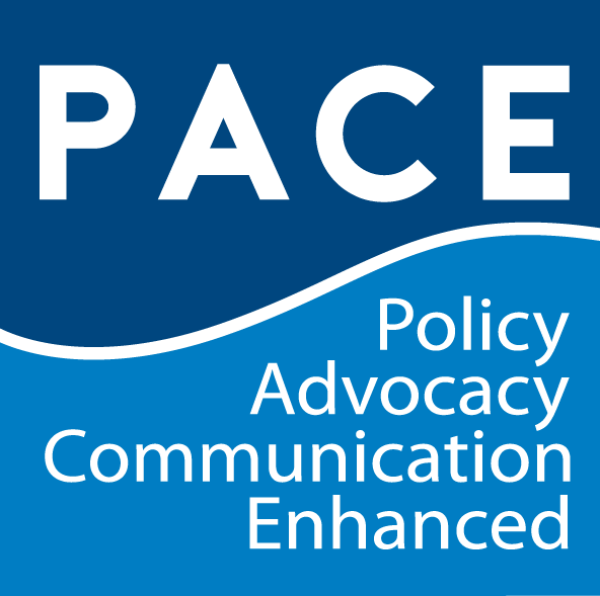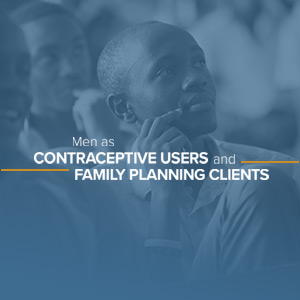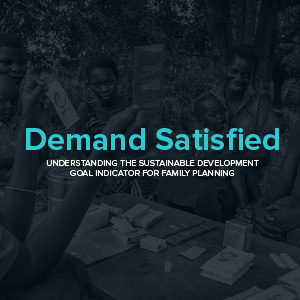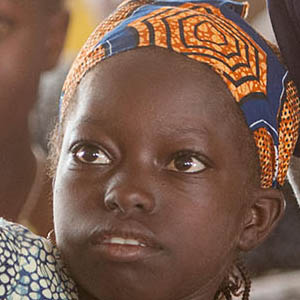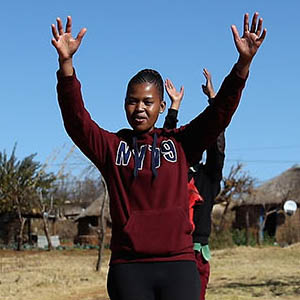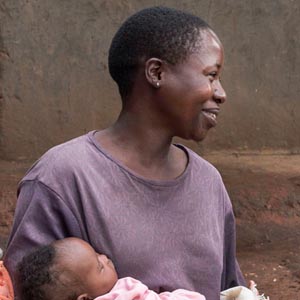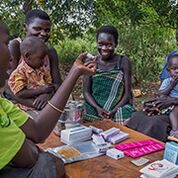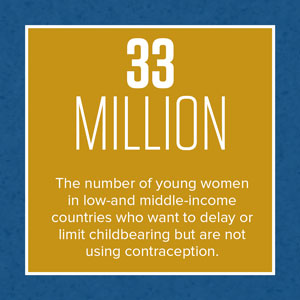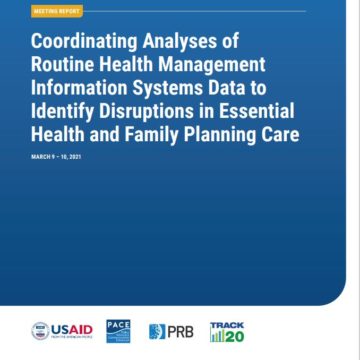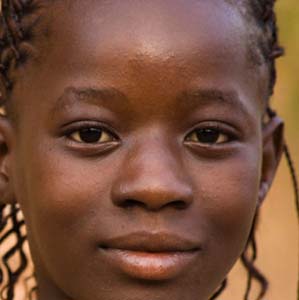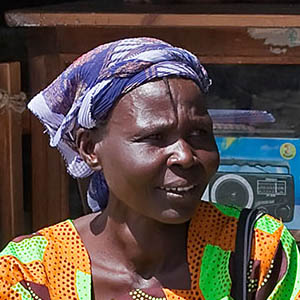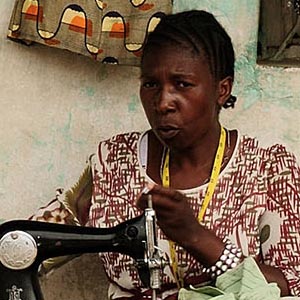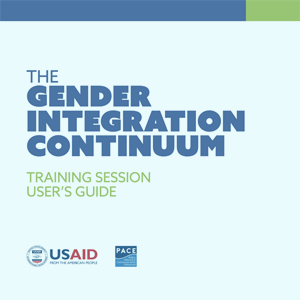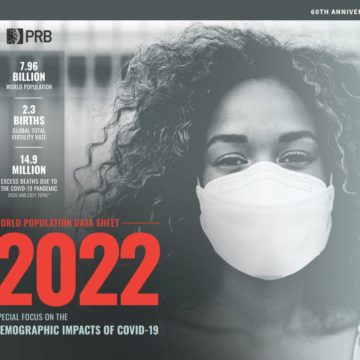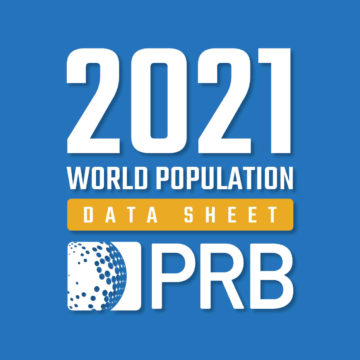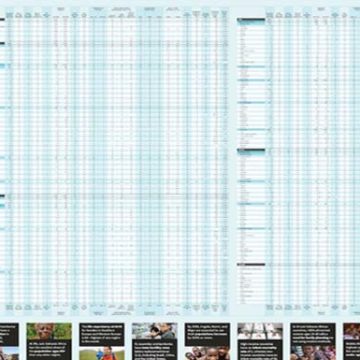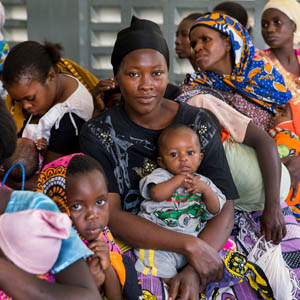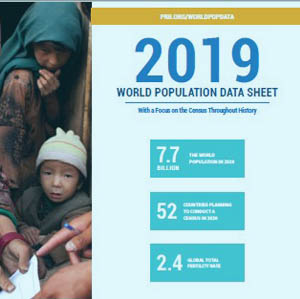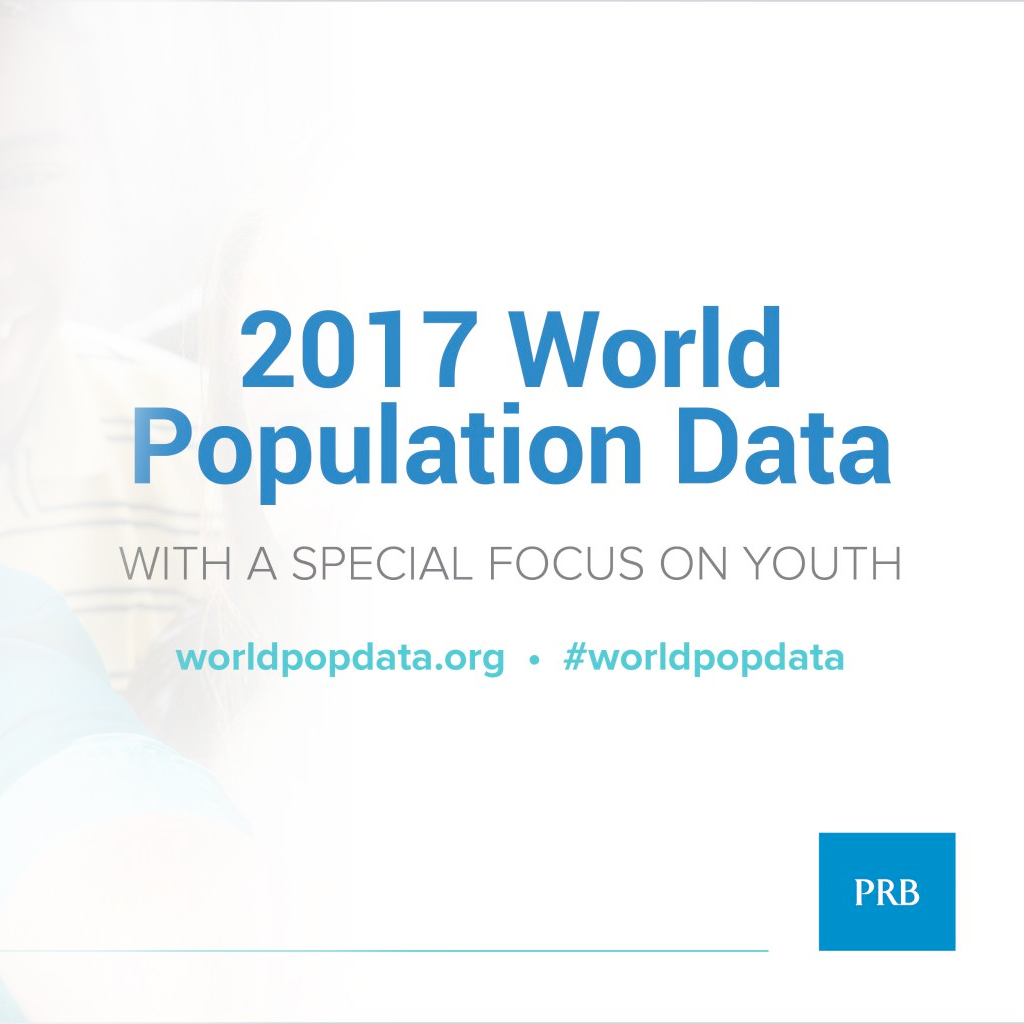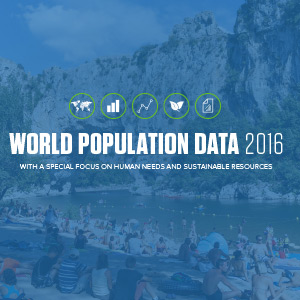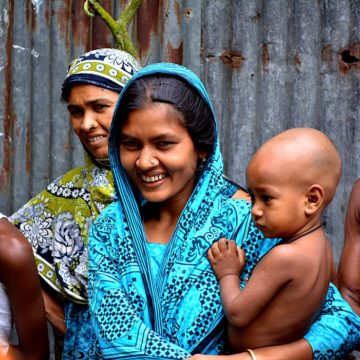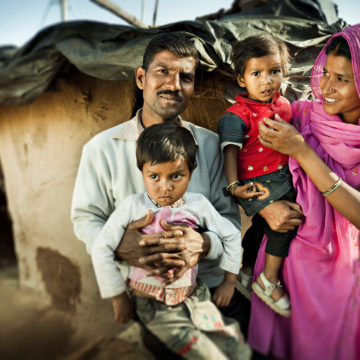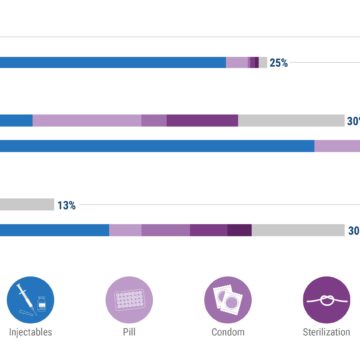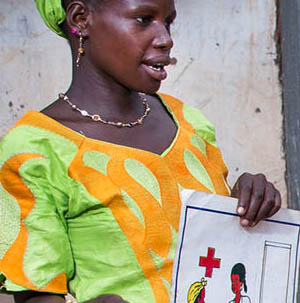PACE conducts analyses and produces evidence-based materials that communicate clearly to policymakers at all levels and across diverse geographies, targeting messages and products using state-of-the-art social media analysis tools to enhance digital communications.
Data Visualizations and Features
Our infographics, web features, and videos present complex topics through a combination of compelling images and concise text.
The Future of Family Planning in Africa: Towards Equitable, Data-Driven, Client-Centered Programs
This report, available in English and French, examines the status of family planning programs in 22 countries in sub-Saharan Africa since the 2016 release of Fostering Economic Growth, Equity, and Resilience in Sub-Saharan Africa: The Role of Family Planning.
Digital Health Compendium
The Digital Health Compendium enables users to explore case studies across a range of digital health technologies used to enhance family planning programs mainly in sub-Saharan Africa, but also in other regions of the world.
The Four Dividends: How Age Structure Change Can Benefit Development
This web feature expands the concept of the demographic dividend to project four potential sets of benefits—in addition to economic growth, it outlines benefits in child survival, education, and political stability.
Men as Contraceptive Users and Family Planning Clients
This infographic highlights modern male-controlled and cooperative contraceptive method use around the world and opportunities to engage more adolescent boys and men as contraceptive users and family planning clients.
Demand Satisfied: Understanding the Sustainable Development Goal Indicator for Family Planning
This infographic introduces users to the Demand Satisfied indicator—how it is measured and how it will be used moving forward.
Choices and Challenges: Dynamics of Contraceptive Use
Over the course of their lives, women may choose to start, stop, or switch family planning methods to meet their reproductive needs and preferences. Learn about trends in contraceptive use dynamics and reasons for discontinuation in nine countries.
Delaying Marriage and Childbearing Can Improve Educational Outcomes in Burkina Faso’s Sahel Region
This research brief and infographic highlight disparities in health and education in the Sahel Region, with an analysis of girls dropping out of school for pregnancy, marriage, and unpaid care work, and provides strategies policymakers can adopt.
Population, Health, and Environment Approaches Enhance Youth Leadership and Development
This web feature details a growing body of evidence that suggests that integrated population, health, and environment projects help youth in rural communities meet their development needs.
Fertility Intentions: Getting the Right Insights by Asking the Right Questions
Over the last 50 years, family planning has created opportunities for women and girls to increase schooling, labor force participation, occupational choice, and wages, so they can build better lives for themselves and their families. For these reasons, family planning has often been called the key to sustainable development.
Family Planning High Impact Practices Can Improve Outcomes for Population, Health, and Environment Programs
When population, health, and environment projects use Family Planning High Impact Practices, they can direct their family planning resources more effectively to achieve greater impact.
Expanding Contraceptive Method Choice for Successful Family Planning
This policy brief and accompanying web feature and webinar explore the rationale for expanding contraceptive choice.
Meeting the Need, Fulfilling the Promise: Youth and Long-Acting Reversible Contraceptives
This brief discusses the advantages and challenges of providing Long-Acting Reversible Contraceptives (LARCs) to youth, provides case studies from Ethiopia and Madagascar, and outlines actions for policymakers and donors to make youth access to LARCs a reality.
Policy Briefs and Reports
Technically sound and trustworthy materials explore complex, wide-ranging population topics and present them in easily digestible formats and language.
Prioritizing the Demographic Dividend: Subnational Advocacy With District Decisionmakers in Uganda
This fact sheet developed with NPC Uganda highlights four successful strategies to increase investments in voluntary family planning and human capital development among district decisionmakers in Uganda.
Stopping v. Switching: Factors Behind Contraceptive Decision-Making
What factors can help us predict which women are at risk of stopping contraceptive use altogether while still in need? This fact sheet can help decisionmakers understand the determinants of stopping versus switching behavior, so they know who is most at risk and can tailor policies and programs to meet their needs and goals.
Coordinating Analyses of Routine Health Management Information Systems Data to Identify Disruptions in Essential Health and Family Planning Care
This report summarizes key outputs and takeaways from a joint convening of Health Management Information Systems experts to promote learning, information exchange, and collaboration on the impact of health system shocks, such as the COVID-19 pandemic, on family planning and other essential health care services.
Contraceptive Discontinuation Among Youth
This package of resources examines the drivers of contraceptive discontinuation among youth and makes recommendations to policymakers on how to increase sustained contraceptive use among this population.
Investments in Family Planning and Education Drive Labor Productivity
This research brief aims to better understand the relationship between use of voluntary family planning, fertility decline, human capital development, and labor productivity.
Delaying Marriage and Childbearing Can Improve Educational Outcomes in Burkina Faso’s Sahel Region
A suite of products highlighting disparities of health and education in the Sahel Region compared to the national level; sharing an analysis of the likelihood of girls dropping out of school for pregnancy, marriage, and unpaid care work; and provideing strategies policymakers can adopt to reduce these barriers.
Contraceptive Evidence: Questions and Answers
The goal of this 2020 update is to help women and men choose methods based on scientific evidence rather than rumors and to assist policymakers, program managers, and providers in filling those needs.
Which Policies Promote a Demographic Dividend? An Evidence Review
This review aims to address these gaps by assessing the literature on specific policy interventions across sectors that explicitly contribute to achieving a demographic dividend.
The Long-Lasting Toll of Conflict on Fertility and Early Childbearing
Over the past decade, the incidence of conflict has been rising in sub-Saharan Africa (SSA), reversing a 20-year trend. This policy brief breaks new ground by examining long-term trends in fertility in SSA among girls who lived in conflict zones when they were very young.
Baringo County, Kenya, Family Planning Fact Sheet
The Baringo County Integrated Development Plan (2018-22) establishes a vision “To be the most attractive, competitive, and resilient county that affords the highest standard of living and security to all its residents.”
Enhancing Family Planning Equity for Inclusive Economic Growth and Development
Across sub-Saharan Africa, national development strategies have established the goal of achieving economic growth that is both rapid and equitable across a population. Efforts to promote shared prosperity will be strengthened by demographic changes that facilitate greater investment in human capital.
Building Resilience Through Family Planning and Adaptation Finance
The impacts of climate change—climbing temperatures, extreme weather, drought, shifting rainfall patterns, and rising sea levels—are intensifying around the world. These impacts threaten to undo development progress in poor and vulnerable communities.
Fostering Economic Growth, Equity, and Resilience in Sub-Saharan Africa: The Role of Family Planning
The linkages between family planning, inclusive economic growth, and resilience in SSA are featured in a new suite of materials from the PACE Project. Distilled from the PACE report Fostering Economic Growth, Equity, and Resilience in Sub-Saharan Africa: The Role of Family Planning, three policy briefs and two infographics highlight the effects of population age structure and fertility rates on SSA’s public institutions, workforce productivity, and access to water.
The Gender Integration Continuum Training Session User’s Guide
The Guide is a tool to help new and experienced gender trainers plan, prepare for, and facilitate the Gender Integration Continuum training session.
Data Sheets
Valued worldwide, PRB’s data sheets synthesize and disseminate demographic data on family planning and reproductive health for countries and world regions.
2022 World Population Data Sheet
The 2022 World Population Data Sheet provides the latest population, health, and environment indicators for more than 200 countries and territories, each carefully researched by PRB’s expert team of demographers and analysts.
2021 World Population Data Sheet
The 2021 World Population Data Sheet provides the latest population, health, and environment indicators for more than 200 countries and territories, each carefully researched by PRB’s expert team of demographers and analysts.
2020 World Population Data Sheet
The latest population, health, and environment indicators for more than 200 countries and territories, each carefully researched by PRB’s expert team of demographers and analysts.
2019 Family Planning Data Sheet Highlights Family Planning Method Use Around the World
The use of family planning methods has increased substantially across countries, but a significant share of women still experience unmet need.
World Population Data Sheet 2019
Fertility rates in the United States dropped to their lowest level in recorded history, with women having an average of 1.7 births in their lifetime.
World Population Data 2018
PRB estimates the 2018 worldwide total fertility rate (TFR, or average births per woman over their lifetime) at 2.4; the global TFR has been declining for the past few decades but remains high enough to generate continued population growth.
Female Genital Mutilation/Cutting: Data and Trends Update 2017
New evidence suggests that the share of women and girls who have undergone female genital mutilation/cutting (FGM/C) is declining in many countries, with girls less likely to be cut than previous generations of women. Data includes survey estimates on 16 countries from surveys
World Population Data Sheet 2017
This edition of the annual Data Sheet, shows a worldwide total fertility rate (TFR, or average lifetime births per woman) of 2.5. The three countries with the highest TFRs are Niger (7.3), Chad (6.4), and Somalia (6.4), while there is a five-way tie for the lowest TFR (1.2) among Bosnia-Herzegovina, Romania, Singapore, South Korea, and Taiwan.
2016 World Population Data Sheet
The world population will reach 9.9 billion in 2050, up 33 percent from an estimated 7.4 billion now, according to projections included in the 2016 World Population Data Sheet.
Articles
Highlights and insights from our projects.
La Polygamie en Afrique de l’Ouest : Ses impacts sur la fécondité, les intentions de fécondité et la planification familiale
De nombreuses femmes en Afrique de l’Ouest sont dans des mariages polygames, mais les besoins uniques et les préférences de ce groupe ne sont pas bien compris
Power and Partnership: Supporting Youth Through the PACE Project
PACE has evolved a model that fosters respectful and mutually beneficial partnerships with youth leaders and youth-led organizations (YLOs) that honors their unique priorities. As the project ends, PACE shares experiences and insights for other INGOs aiming to deepen their partnerships with youth and YLOs.
Population Age Structure and Pathways to Inclusive, Effective Governance
Many factors contribute to inclusive, effective governance and stability. New analysis from PACE, known as the Four Dividends, illustrates that population age structure may be one such factor. Among countries with a youthful population, a window of opportunity to achieve key development goals opens across four sectors―health, education, the economy, and governance―as fertility declines and the age structure of the population gets older.
Why Do Women Stop Using Contraception? Examining Bangladesh, Mali, and Zambia With PACE’s Choices and Challenges Tool
When decisionmakers better understand the data showing why women stop using contraception despite a preference to avoid pregnancy, they can promote policies and programs that enable continued use of and increased satisfaction with family planning services.
Future Trends in Fertility Will Shape the Demographic Window of Opportunity in USAID Priority Countries
A country’s age structure is primarily driven by its past fertility trends, which have important economic, social, and political implications. Our analysis explores the timing and duration of countries’ window of opportunity in the 24 USAID family planning priority countries under different future fertility scenarios.
Policy Dialogue Between Youth Leaders and Policymakers on Sustaining Youth Contraceptive Use in West Africa
PACE convened a two-hour virtual policy dialogue on youth contraceptive discontinuation in West Africa on May 26, in collaboration with the Réseau des Femmes Sénégalaises pour la Promotion de la Planification Familiale and Knowledge SUCCESS.
Understanding and Comparing Population Projections in Sub-Saharan Africa
PRB reviewed three organizations’ population and fertility projections and their underlying assumptions in sub-Saharan Africa to see how they differ, with implications for policy decisionmaking and risk management related to key aspects of the global economy, environmental protection, and resource distribution.
Sustaining Success: PACE Insights on Family Planning Policy and Program Priorities
Over the last two decades, many sub-Saharan African countries have realized remarkable increases in the use of modern contraception. More women and couples are using effective methods to choose when and how many children to have—benefiting their health, their children’s health, and the economic prospects for their families.
Tried and True, Yet Fresh and New: A Conversation About the Spanish Policy Communication Toolkit
Interview with Amparo Gordillo-Tobar, a senior health economist at the World Bank and a 1999 alumna of PRB’s Policy Communication Fellows Program, talking about her time as a fellow and her recent work translating the toolkit to Spanish.
Engage Youth Advocates Effectively With These Simple Guidelines
These guidelines seek to reconstruct how workshop leaders and program staff can better guide and train young people to be empowered in the decisionmaking and policy implementation processes.
Myths, Misconceptions Still Discourage Use of Family Planning
Pernicious and difficult-to-address myths and misconceptions around modern contraception still discourage or prevent millions of women from beginning or continuing to use a method.
Can Drones Help Avert Contraceptive Stockouts? Maybe…
With the persistent problem of contraceptive stockouts, drones might seem to be a natural solution to maintaining a more even supply given unpredictable trends in demand.
PACE Presents a New Youth Leaders Module for the Policy Communication Toolkit
The Policy Communication Toolkit consolidates training resources and includes social media for research and policy, and policy communication for budget negotiations and accountability.
Know Your Audience: Ensure Your Research Influences the Right People
One of the main reasons evidence doesn’t get to the appropriate policymakers is that researchers and policymakers have different expectations and goals
Your Research Matters: Make It Accessible to Policymakers
If you want to engage in policy discussions, it helps to think of larger policy changes as an overall goal, but focus on the incremental steps along the way that are equally important in achieving these goals.
Journalists’ Reporting on Reproductive Health Helps Make It a Policymaking Priority
In Senegal, journalists’ reporting on reproductive health issues has drawn policymakers’ attention and spurred action, contributing to a doubling of the country’s modern contraceptive use in less than a decade.
Three Takeaways on the Four Dividends: How Age Structure Change Can Benefit Development
The beneficial links between population age structure change and economic development are widely known, and often described as the “demographic dividend.”
Journalists Weather Currency Storm
We weathered the currency storm and held the seminar, focusing on basic reproductive health and family planning issues, as well use of data and evidence to strengthen news coverage of these topics.
Digital Toolkit Expands Reach of Policy Communication Training
We believe that demographic and health data should play an important role in shaping and improving policies and programs around the world; but we also recognize that researchers and advocates must make a concerted effort to communicate that data strategically.
Resources on Integrated Population, Health, and Environment (PHE) Approaches
PHE projects are unique in their aim to both meet the reproductive health needs of a community while also developing environmentally sustainable livelihoods through natural resource management and biodiversity conservation.
Journalists Learn Where Reproduction Begins (It’s Not Where You Think)
The process of reproduction begins, Dr. Nakabembe told Women’s Edition journalists, in the brain as it controls the hormones that set the reproductive process in motion. Most important, she explained why women respond so differently to the various hormonal methods of contraception.
Inspiring Youth to Tackle Social Issues Through Multimedia Campaigns
Imali Ngusale, 2018 alumna of PRB’s Youth Multimedia Fellowship (see her final project here), is a communicator and multimedia producer with a passion for social change and engaging young people in development, particularly in sub-Saharan Africa. We spoke to Imali about her interest in using multimedia to tackle important social topics and the impact of her PRB fellowship.
Policy Communication Training Gets Ground-Truthed in Tanzania
The training curriculum came from our recently published Policy Communication Toolkit, and included skills building on key topics such as: creating a window of opportunity for policy change, crafting compelling messages, improving data visualizations, and writing and presenting for policy audiences.
The Art of the K.I.S.S.
Fellows were tasked with identifying the policy relevance of their research findings, concisely explaining the implications of their data, and creating actionable recommendations, all while keeping the audience foremost in their communication approach.
Bringing Family Planning to the African Great Lakes Conference
We wanted to reach an audience beyond the family planning community and share the latest information and research on the ways that population dynamics and population health can affect conservation efforts, especially in lake basin communities.
